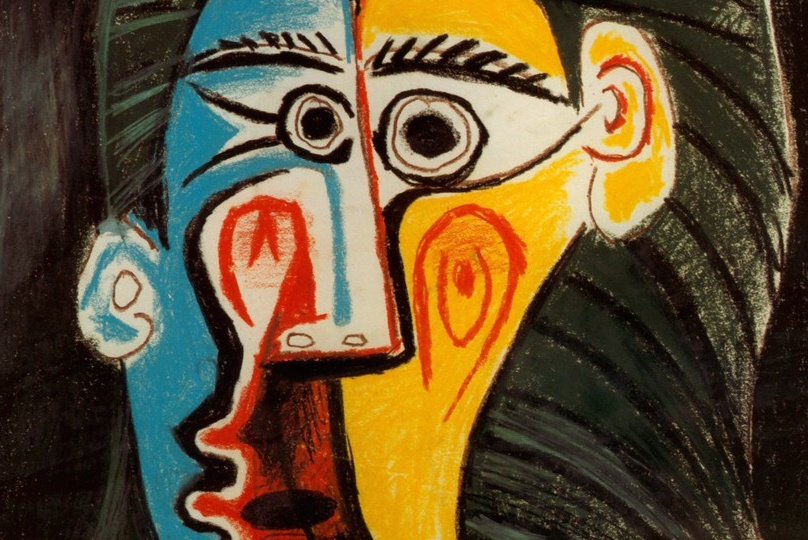
In one sense, the body is what I immediately am. In another sense, I am separated from it by the infinite density of the world.
Jean-Paul Sartre, Being and Nothingness.
The body has never had one meaning throughout human history. In ways that we choose to examine it, classify it, embellish it, play with it we make very different statements about what this body means to each of us as individuals and as members of communities we belong to or represent. The ‘body’ we study is an anatomical body susceptible to disease and death; a social body with gender, race, class; a cultural body that is a repository for song, words, ritual, habit and memory. It is sometimes a philosophical construct, sometimes a tangible physical entity.
As Anthony Synnott writes in his essay Tomb, Temple, Machine and Self, “There are no such things as bodies in general. There are only male and female bodies, black and yellow and white ones, disabled and able-bodied people, beautiful and ugly, old and young and so on, in all their particularities. About six billion in all.” In this issue of In Plainspeak we examine what pleasure means to a body that is constructed at the intersection of gender, race, class and ability.
The Issue in Focus features Ketaki Chowkani’s piece on what physical pleasure and emotional attachment mean to young Indians in a post-modern, post-feminist urban space. How do they play with their bodies, how do they understand them and how do they take care of them as navigate the tension between old-world conventions and new-age ideas of sexual liberation?
Meghna Bohidar continues the discussion on young bodies in the I-Column, which asks why people are threatened by adolescent sexuality. She explores schools as spaces where the body is taught lessons on convention and shame. This discourse on shame extends to the changes we experience as young people. Shambhawi Vikram writes the shame and secrecy around menstruation, and her inspiration for running a campaign that broke the silence around the period. We also have an anonymous contribution under the I-Column that explores the hypocrisy around premarital sex, focusing on how women are made to feel particularly uncomfortable and ashamed about their sexuality even in urban spaces.
Who owns the body? How does it remember culture and conventions that have oppressed it or liberated it? How does it acquire new meanings and identities? We have several articles under the column Voices that explore these ideas. Shikha Aleya wonders if the body is ‘somebody else’s dolly’ in a piece that explores ideas of ownership and validation through everyday experiences. Abdullah Erikat also explores ownership over the body in an article that looks at theories and traditions in the biological sciences and the social sciences that distance us from our bodies and maybe from our identities. Rishita Nandagiri writes about the body that becomes visible in discourses on sexual and reproductive rights, as she talks about what international agendas choose to see and what they choose to ignore.
The body is also the subject of modern medicine, and what can we learn from discourses that emerge at the intersection of science and sexuality? Surabhi Srivastava and Kristen Francoeur explore the abortion discourse for what it says about who owns a woman’s body and who decides what is appropriate sexuality. Anindita Majumdar’s article explores surrogacy as a complex answer to navigating social hierarchies created at gender-class-race intersections. Which bodies become central in this emerging discourse, which bodies become peripheral, and who decides? Shweta Krishnan‘s article takes a look at how social prejudices, gender biases and society’s discomfort with sexuality affects medical practice.
Under Voices, we also have a compilations of poems on body, gender and sexuality from Akhil Katyal, along with one of his translations of Amrita Pritam’s poem, Mera Pata (My Address). Almas Shamim writes a poem on beauty, acceptance and love.
Bodies also become marginalised in narrow discourses on body aesthetics. In Brushstrokes and the Video Page we showcase bodies that challenge such narrow notions of beauty. In Brushstrokes we feature a photoshoot with women who were attacked with acid, and in the Video Page, we feature a video of Viktoria Modesta, a pop sensation, whose physicality has become known for challenging the modern perception of altered beauty.
The body can also be loved, adored, admired. Geetanjali Misra reviews two films, The Imitation Game and Margarita With A Straw pointing to how the fear of forbidden sexual desire is at the heart of both, with one being set in the 1940s and the other some sixty years later. The protagonists of both films are queer, but in Margarita not only is she queer, she also has a disability. Someone with disability wanting to have sex? Well, why ever not?
We continue this discourse on disability in the interview with Nidhi Goyal, where Anisha Dutt talks to her about disability, sexuality and pleasure.
The Hindi Column carries a translation of Malini Chib’s article, Sexless in the City (For No Fault of Mine), an article she wrote for In Plainspeak in August 2014. It was translated by Nidhi Agarwal for Yaunikta, Gender aur Adhikar Adhyayan Binder, CREA, New Delhi.
This month, TARSHI’s Corner features photographs from TARSHI’s Letters to the Body Campaign, and the Book Corner, features a pocket book entitled, Remember, Body…, with poetry by the Greek poet C.P. Cavafy. Carry it around this summer and read about memories of desire and pleasure converging on the body.
In the blogroll we feature an article from National Public Radio (USA) on the book, Trans Bodies; Trans Selves.
We will be back next month with an exciting discussion on Technology and Sexuality.
Until Then,
Happy Reading!
The TARSHI Team
Pic: Pablo Picasso
Source: Drawingsomeone.com